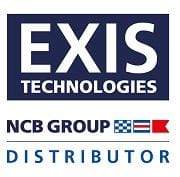On January 22-23, 2018, new guidelines for safe mooring and draft amendments to Safety of Life at Sea (SOLAS) Regulation 11-1/3-8 were discussed by the IMO Sub-Committee during the Ship Design and Construction session. These safety suggestions will be submitted when finalized and to be reviewed and approved by the Maritime Safety Committee (MSC).

What is Mooring?
The word mooring is in a mariner’s everyday vocabulary. It refers to a permanent structure to which a vessel is secured from the movement of the ship on the water – where people can keep their boats or ships tied up.
Piers, wharfs, and docks all typically provide moorings for boats and ships, where they can be attached securely with ropes. Mooring is often accomplished using mooring lines or hawsers. These thick ropes are usually made from a synthetic material such as nylon.
Why did Safety of Life at Sea (SOLAS) regulations on mooring need to be revised?
Poor mooring practices can result in a fatal accident. A real life incident occured when a crew member was killed after being hit by a mooring rope during the mooring operation on a Hong Kong registered bulk carrier. The Hong Kong Marine Department reported that during this operation, the rope was stuck beneath the berth fender and was tightening up without anyone being aware of the risk. The taut rope bounced off from beneath the berth fender and struck the ordinary seaman (OS) causing the death.
The draft revision of SOLAS regulations 11-1/3-8 focused on inspection and maintenance of mooring equipment for all the vessels regardless of its design and date of construction. It develops new guidance to support the safe use of all equipment and proper guidelines on stability.
The purpose of this regulation revision is to prevent accidents and/or injury when ships are being secured at their berth in a port.

Additional Regulations
The following newer regulations and amendments increase maritime safety and reduce the danger to the environment, cargo, mariners and shippers. These regulations include:
-
International Maritime Solid Bulk Cargoes Code (IMSBC Code)
These include updates to existing individual schedules for solid bulk cargoes.
-
International Maritime Dangerous Goods Code (IMDG Code) Ship operators intending to carry packaged dangerous goods are encouraged to consider adopting changes.
-
International Code for Ships Operating in Polar Waters (Polar Code) The Polar Code promotes safety and reduce the environmental threat from vessels operating in Polar regions. It also covers many other subjects including vessel design and construction, operational procedures, on board equipment and training standards.
-
International Convention for the Prevention of Pollution from Ships (MARPOL) Annex I
The amendments apply to all new vessels. The oil residue tanks must have no discharge connections to the bilge system, or oily bilge water holding tank.
There are two exceptions for the tank top or oily separators:
- Tanks may be fitted with drains that lead to an oily water holding tank.
- The sludge tank discharge piping and bilge-water piping may be connected to a common discharge connection provided and it does not allow for the transfer of sludge to the bilge system.
-
International Convention for the Safety of Life at Sea (SOLAS)
- Chapter II-1, Part G, Regulation 56 – Ships using low-flashpoint fuels (MSC.392(95))
- Chapter II-1, Part G, Regulation 57 – Requirements for ships using low-flashpoint fuels (MSC.392(95))
- Chapter II-2, Part B, Regulation 4 – Probability of ignition (MSC.392(95))
- Chapter II-2, Part C, Regulation 11 – Structural Integrity (MSC.392(95)) clarifying the provisions related to the secondary means of venting cargo tanks in order to ensure adequate safety against over-and under-pressure in the event of a cargo tank isolation valve being damaged.
- Chapter II-2, Part G, Regulation 20 – Protection of Vehicle, Special Category and Ro-Ro Spaces (MSC.392(95)) relating to performance of ventilation
- Chapter XIV – Safety Measures for Ships Operating in Polar Regions (MSC.386(94))
-
International Convention on Standards of Training, Certification and Watchkeeping for Seafarers (STCW)
Desiring to promote safety of life and property at sea and the protection of the marine environment by establishing in common agreement international standards of training, certification and watchkeeping for seafarers.
Nautical Resources
We have been proudly serving the maritime community since 1977 and are always dedicated to providing our customers with the best nautical resources and services.
Check out the following links below to find more information about guidance on the basic principles of mooring:
Effective Mooring, 3rd Edition: Safety and detailed understanding of the operational requirements to create a greater awareness of the dangers and hazards.
Mooring Equipment Guidelines, 3rd Edition: These guidelines provide extensive overview of safe mooring from both a ship and terminal perspective, the selection of rope and fitting types to the retirement criteria for mooring lines and so on.








